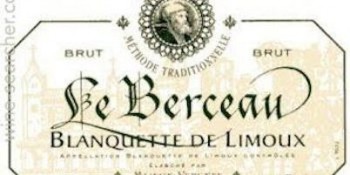Champagne and the Academy Awards seem to go together like ice cream and apple pie. It’s become a natural pairing: glitzy, glamorous Hollywood celebrities sipping the finest sparkling wine available. And if you feel like splurging on $100 or $1,000 bottles, go for it! But alternatives abound, including some unique, interesting sparklers.
You probably know that Champagne originates from the Champagne region of France, and only sparkling wine produced there can carry the name in that country. But plenty of comparable sparkling wine is produced elsewhere and for a lower cost. So how is sparkling wine made?
The process starts out similarly to normal wine: harvesting and crushing grapes into juice, and allowing the juice to ferment. Sparkling wine from France is either “Blanc de blancs,” made with white grapes, or “Blanc de noirs,” made with red or black grapes. Blanc de blancs are usually crafted from Chardonnay, while Blanc de noirs often use Pinot Noir and/or Pinot Meunier. Despite these Blanc de noirs being dark-skinned, the juice is drained off the skins almost immediately, so the wines still look “white,” much like the process used for many rosés.
After this, sugar and more yeast are added to the wine before it is bottled to undergo a second fermentation and aged “on the lees“. This is when the bubbles are created. Next, the bottles are stored at a 45-degree angle with the cork pointed down, then “riddled” — turned and gently shaken every few days — to force the dead yeast cells down towards the cork. The necks of the bottles are dipped in a freezing brine and turned right side up when the pressure builds enough to push the dead yeast cells (and a small amount of wine) out.
The expelled wine is replaced with a sugary mixture that determines how sweet or dry the sparkling wine will become, and then is finally re-corked. This is referred to as the “méthode champenoise” in Champagne, or the “traditional method” everywhere else. For designations of sweetness, drier bottles will typically labeled Brut (dry), Extra Brut (extra dry) or Brut Natural (driest).
Elsewhere in France, there are multiple “Crémant” (French for “creamy”) appellations which focus on sparkling wine. Crémant de Bourgogne (Burgundy) is one such appellation, and there are definitely smart buys to be found. Louis Bouillot Crémant de Bourgogne Rosé Brut Perle d’Aurore is one example — a rosé that, while not complex, has delicious creamy flavors of strawberry, cranberry, cream, and apple, and is very affordable.
Of course, there’s plenty of sparkling wine from France produced outside the well-known regions like Champagne and Burgundy. One of my favorites is the Domaine de Martinolles ‘Le Berceau’ Blanquette de Limoux. Limoux, in the western part of the Languedoc region, is one of the few places left on Earth planting the Mauzac grape, which must make up at least 90 percent of wines produced there. The wine is an easy drinking sparkler, with refreshing lemon and tart apple flavors that intertwine with yeasty bread, herbs, and fresh-cut grass. This is great with light appetizers or cheeses, but my favorite pairing is buttered popcorn — perfect for Oscars night. The lemony acidity cuts right through the butter. The Lucien Albrecht Crémant d’Alsace Brut Rosé is also a great sparkling rosé, with similar red berry flavors to the Louis Bouillot, but with an added fresh baked bread component.
If you are looking for something domestic, there are plenty of examples from California at decent prices. The Piper Sonoma Blanc de Blancs Sonoma County Select Cuvée is a solid purchase at $18, as is Korbel’s Brut Rose for an easy-drinking value buy at $15. But the Gruet Winery is creating some outstanding sparkling wine — in New Mexico, of all places. Their line of non-vintage sparklers is outstanding both in quality and price, falling between $15 and $18. The Gruet Brut has classic flavors of toast, yeast, apples, and a little lemon, while the Brut Rose exhibits creamy strawberry, raspberry, and tart cranberry flavors. I’m looking forward to trying the Extra Brut, Sauvage, and Blanc de noirs as well.
Finally, the new kid on the block is Cava, a sparkling wine from Spain. Cava is also produced using the méthode champenoise, but uses lesser known grape varieties including Macabeo, Parellada, and Xarel-lo. Cava is typically much less expensive than Champagne or California sparklers because it is still relatively unknown: the demand is low, so there are some good wines available for very good prices, sometimes less than $10. Cava typically shows less fruitiness than Champagne or Italian Prosecco (another sparkling wine worth trying) and more earthy, mineral, and citrus flavors.
Freixenet produces a variety of Cavas from sweet to dry, and their two driest, the Cordon Negro Brut and Cordon Negro Extra Dry, are both worthy of an Oscars party. The Brut shows plenty of grapefruit and lemon citrus, with hints of apple and ginger. The Extra Dry is just a little bit sweeter, with melon, peach, and earthy mineral flavors. Both are widely available for less than $15.
There are plenty of options out there and many sparkling wines are offered for a decent price. For most of us, the Academy Awards are an excuse to have a fun night, but it is by no means a huge milestone that requires a magnum of Dom Perignon. So try something new! Who gets your award for “Best Wine”?
